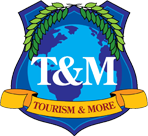Some Suggestions in Preparing an Overall Tourism Strategy
November 2003
All too often tourism seems to develop in an almost sui generis manner. That is, rather than being a planned industry, tourism simply seems to come to a place and entrepreneurs then take advantage of the situation. It is only in recent times that tourism locales, be they nations, states/provinces, or communities, have developed overall tourism strategies. Below are several concepts, questions and ideas to help you begin to think through an overall comprehensive tourism strategy for your community or tourism locale.
- Understand that tourism is really multiple industries that live under one umbrella. One of the difficult parts of planning in the tourism industry is that it is really not one industry, but a composite industry. Some of tourism’s components are obvious: the transportation industry, the hotel industry, the restaurant industry, the attractions industry, the resort industry. Other components are equally important and often less obvious. Some of the other hidden components within the tourism industry are: the security industry, the police, the local government, the sanitation industry, the medical industry, the fishing/gaming industry, and the ecologists.
- Foster an overall cooperative effort between public and private sides of the industry. The traveling public does not know nor should it care if a particular component within tourism is publicly or privately owned. The line between public and private should be seamless. What is important is not who is doing what, but rather how a service is being offered. The same standards should apply to both the public and the private sectors. Make sure that services, measurements of success, and information offered are coordinated and standardized so that the public knows what to expect.
- List what is the responsibility of the public and the private sectors. For example, control of ports, transportation hubs, law enforcement, and road/airport construction may be in the public sector. The private sector may be responsible for hotels, restaurants, and providing actual transportation. Marketing of attraction, development and utilities may be both public and private or part of joint public-private partnerships.
- Invite each player to the table, prior to making a decision. Remember all of the components must work together. Any single failure can result in negative feedback and become the cause of a tourism entity’s decline.
- Develop tourism clubs where people who share a common goal can work together. Tourism product clubs can provide opportunities for cooperative marketing, tourism clustering, long term joint planning, in-house professional continuing education, shared knowledge and sufficient resources to overcome new problems as they arise. Often, tourism product clubs need outside input in order to come together. These product clubs can be especially helpful to small and medium-sized businesses. This input can come from the public sector, from the local Convention and Visitors Bureau, and state, provincial, or national tourism offices.
- Develop your overall strategy based on who you are and not who is your competition. It really does not matter what other tourism entities are doing…what matters is what your tourism locale is doing. That means tell your story to the visitor. All too often tourism plans are based around large national or international stores, shopping malls or golf courses. In developing your plan, ask yourself: What makes you different? Why would someone want to visit your locale? Where are your tourism strengths and where are your tourism weaknesses? Ask yourself who you are marketing toward and who would be disappointed in your location.
- Be sure to examine your locale’s weaknesses with care. Especially in more rural communities, often what you may consider to be your weak point may really be your strongest selling point. The visitor is not interested in seeing that you too have another chain store, but rather is seeking the unique and the special. Every community has a tale to tell. Incorporate your tale into your overall tourism plan.
- Remember that few people buy other people’s history. History can be a great marketing tool if it is presented correctly. All too often, communities declare things to be historic that simply are not history. In a like manner, to use history as a marketing tool it must be relevant not only to those explaining it, but also to those people who are being addressed.
- Emphasize your culinary heritage in your overall strategy. No matter where you are in the world, people love to eat and try new foods. When developing a culinary strategy, make sure to develop correct and up-to-date literature that tells visitors how to find your area’s safe and hygiene-friendly culinary delights. Poor food quality and lack of hygiene can destroy a tourism destination’s reputation almost overnight. Make sure that your local health department understands how important a role it plays in your tourism strategy.
- Do not forget to include human resource development in your tourism strategy. All too often tourism industries forget that industry is only as successful as the people who work in it. Tourism is not easy work. It requires long hours, a great deal of patience and often can be challenging to both mind and body. Tourists are on vacation and tourism professionals or online representatives are often asked to think for them. Develop personality profiles for each of the components within the tourism industry and then try to choose people who best fit those needs. Then, remember that tourism professionals are people too, their batteries can begin to run down and they need continual opportunities to increase their skills, to network and to vent. The time spent in training may well result in better service to the client, better word-of-mouth advertising for the locale and greater profits for the destination.



